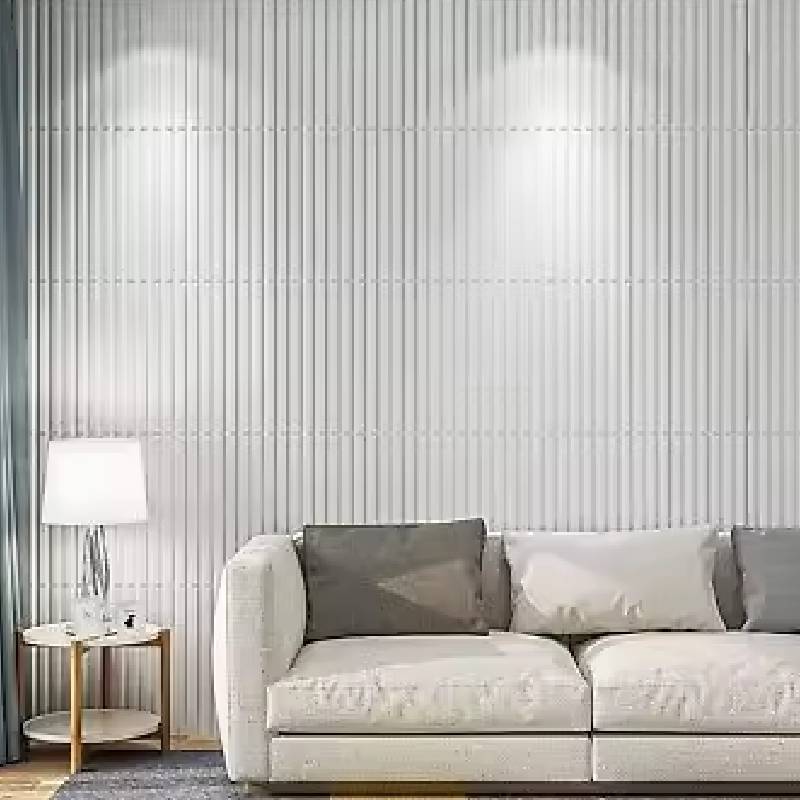The Importance of Grooved Acoustic Panels in Modern Interior Design
In today’s fast-paced world, where urban development and modern architecture are on the rise, the need for effective sound management in indoor spaces has become increasingly paramount. One innovative solution gaining traction is the use of grooved acoustic panels. These panels not only serve a practical purpose in controlling sound reverberation and echo within a space but also contribute significantly to the aesthetic appeal of modern interiors.
Grooved acoustic panels are specially designed panels that feature grooves or channels along their surface. This design not only enhances their sound-absorbing properties but also adds a unique visual element to any space. Their ability to reduce noise levels makes them a popular choice for various environments, including offices, restaurants, auditoriums, and homes. As society becomes more aware of the impact of sound on well-being and productivity, the demand for such solutions continues to rise.
One of the primary benefits of grooved acoustic panels is their effectiveness in managing sound. In spaces with hard surfaces, such as concrete, tile, or glass, sound tends to bounce off these surfaces, leading to increased echo and reverberation. This can create an uncomfortable auditory environment, making it difficult for individuals to communicate effectively or concentrate on their tasks. Grooved acoustic panels mitigate this issue by absorbing sound waves, thus reducing noise levels and creating a more pleasant atmosphere.
In addition to their sound management capabilities, grooved acoustic panels come in a variety of materials, colors, and finishes, allowing for endless design possibilities. Manufacturers often produce these panels from sustainable materials such as recycled wood fibers, which not only support eco-friendly initiatives but also provide a warm, natural look. The customizable nature of these panels makes them a favored choice for interior designers looking to achieve a cohesive design that merges functionality with style.
grooved acoustic panel

When incorporated into an interior space, grooved acoustic panels can serve as focal points, drawing the eye and enhancing the overall aesthetic. For instance, in a modern office setting, these panels can be used to create a sense of depth and interest on what might otherwise be plain walls. In auditoriums or theaters, grooved panels can be strategically placed to optimize sound quality while also contributing to the architectural beauty of the venue. By blending acoustics with design, these panels elevate the user experience to new heights.
Moreover, grooved acoustic panels are versatile in terms of application. They can be mounted on walls, suspended from ceilings, or even used as room dividers. This flexibility allows for creative solutions tailored to the specific needs of a space. Whether in a bustling café aiming for a lively atmosphere or a serene spa where tranquility is key, grooved acoustic panels can be designed to meet different acoustic and aesthetic requirements.
In a world increasingly focused on quality of life, the role of sound cannot be overlooked. Research has shown that excessive noise can lead to stress, decreased productivity, and negatively affect overall health. Therefore, incorporating grooved acoustic panels into architectural designs is not just a matter of style, but also of promoting well-being. These panels create spaces where people feel comfortable and can engage meaningfully with their surroundings, whether that’s in a collaborative workspace or a peaceful home environment.
In conclusion, grooved acoustic panels represent a perfect marriage of form and function in contemporary interiors. Their ability to manage sound effectively while also enhancing the visual design of a space makes them an invaluable asset in today’s architectural landscape. As we continue to seek harmonious environments, the incorporation of grooved acoustic panels will undoubtedly play a significant role in shaping the acoustic and aesthetic qualities of our indoor spaces. Embracing these innovative solutions not only addresses practical concerns but also contributes to a more thoughtful and engaging approach to interior design, ultimately enriching the experiences of those who inhabit these spaces.
